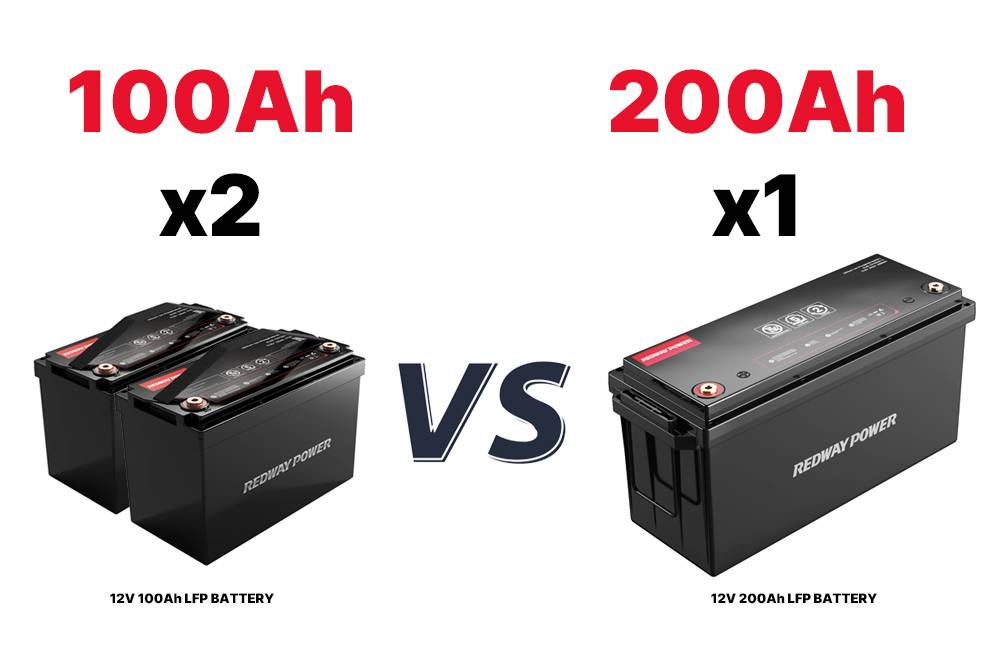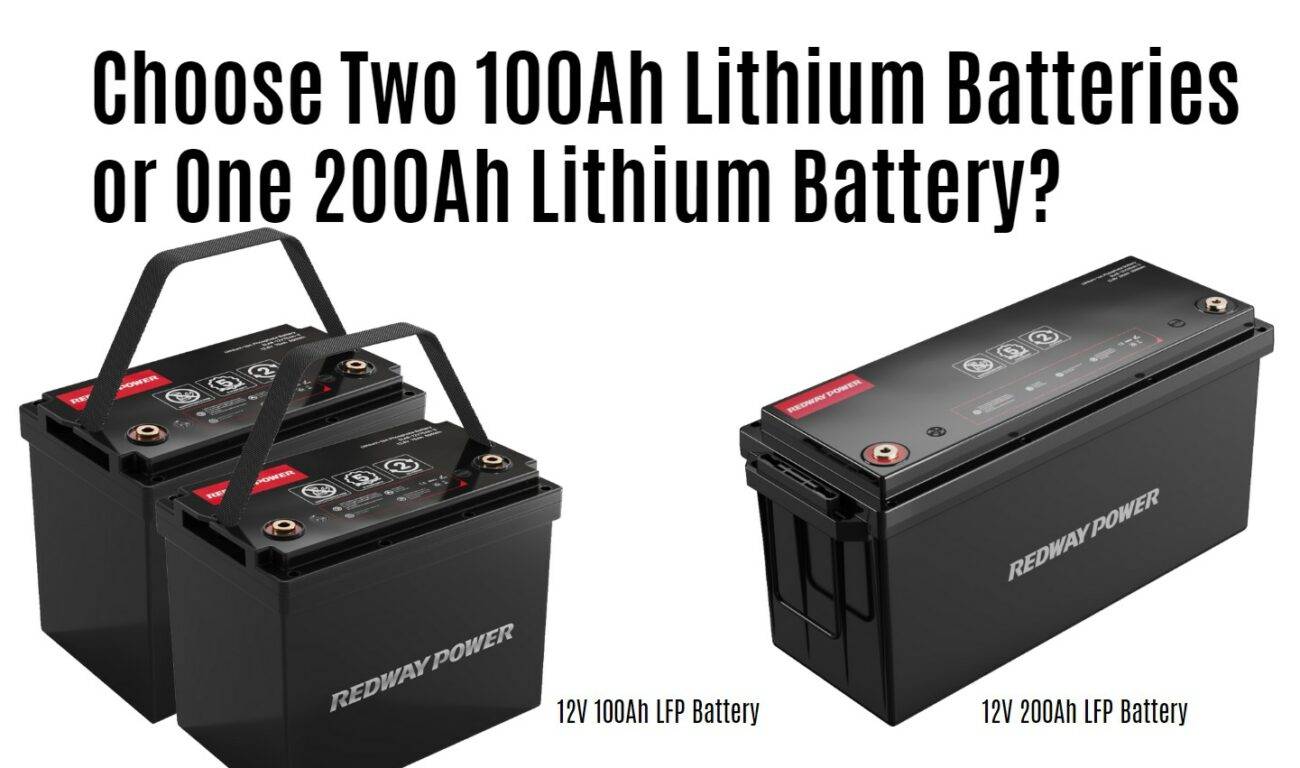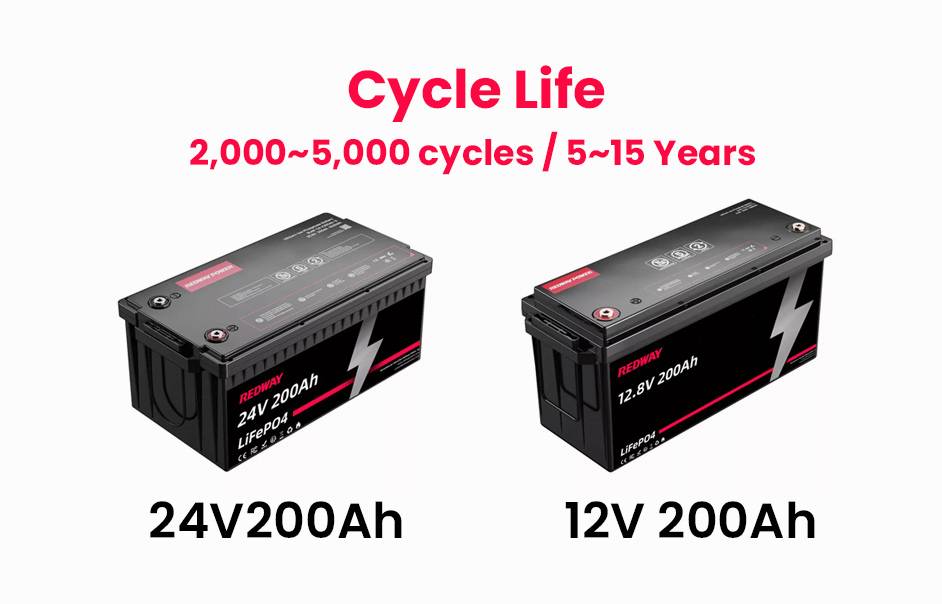- Rack-mounted Lithium Battery
- Golf Cart Lithium Battery
-
Golf Cart Lithium Battery
- 36V 50Ah (for Golf Carts)
- 36V 80Ah (for Golf Carts)
- 36V 100Ah (for Golf Carts)
- 48V 50Ah (for Golf Carts)
- 48V 100Ah (Discharge 100A for Golf Carts)
- 48V 100Ah (Discharge 150A for Golf Carts)
- 48V 100Ah (Discharge 200A for Golf Carts)
- 48V 120Ah (for Golf Carts)
- 48V 150Ah (for Golf Carts)
- 48V 160Ah (Discharge 100A for Golf Carts)
- 48V 160Ah (Discharge 160A for Golf Carts)
-
Golf Cart Lithium Battery
- Forklift Lithium Battery
- 12V Lithium Battery
- 24V Lithium Battery
- 36V Lithium Battery
- 48V Lithium Battery
-
48V LiFePO4 Battery
- 48V 50Ah
- 48V 50Ah (for Golf Carts)
- 48V 60Ah (8D)
- 48V 100Ah (8D)
- 48V 100Ah
- 48V 100Ah (Discharge 100A for Golf Carts)
- 48V 100Ah (Discharge 150A for Golf Carts)
- 48V 100Ah (Discharge 200A for Golf Carts)
- 48V 150Ah (for Golf Carts)
- 48V 160Ah (Discharge 100A for Golf Carts)
- 48V 160Ah (Discharge 160A for Golf Carts)
-
48V LiFePO4 Battery
- 60V Lithium Battery
-
60V LiFePO4 Battery
- 60V 20Ah
- 60V 30Ah
- 60V 50Ah
- 60V 50Ah (Small Size / Side Terminal)
- 60V 100Ah (for Electric Motocycle, Electric Scooter, LSV, AGV)
- 60V 100Ah (for Forklift, AGV, Electric Scooter, Sweeper)
- 60V 150Ah (E-Motocycle / E-Scooter / E-Tricycle / Tour LSV)
- 60V 200Ah (for Forklift, AGV, Electric Scooter, Sweeper)
-
60V LiFePO4 Battery
- 72V~96V Lithium Battery
- E-Bike Battery
- All-in-One Home-ESS
- Wall-mount Battery ESS
-
Home-ESS Lithium Battery PowerWall
- 24V 100Ah 2.4kWh PW24100-S PowerWall
- 48V 50Ah 2.4kWh PW4850-S PowerWall
- 48V 50Ah 2.56kWh PW5150-S PowerWall
- 48V 100Ah 5.12kWh PW51100-F PowerWall (IP65)
- 48V 100Ah 5.12kWh PW51100-S PowerWall
- 48V 100Ah 5.12kWh PW51100-H PowerWall
- 48V 200Ah 10kWh PW51200-H PowerWall
- 48V 300Ah 15kWh PW51300-H PowerWall
PowerWall 51.2V 100Ah LiFePO4 Lithium Battery
Highly popular in Asia and Eastern Europe.
CE Certification | Home-ESS -
Home-ESS Lithium Battery PowerWall
- Portable Power Stations
How Long Will a 200Ah Lithium Battery Last? Exploring Runtime and Factors

A 200Ah lithium battery can provide power for varying durations based on the load it supports, depth of discharge, and charging practices. Typically, under optimal conditions, a 200Ah lithium battery can last from 8 to 16 hours when powering devices that draw between 10 to 25 amps. Understanding these factors is essential for effective battery management.
What Factors Influence the Runtime of a 200Ah Lithium Battery?
Several key factors affect how long a 200Ah lithium battery will last:
- Load Current: The amount of current drawn by the device directly impacts runtime. Higher loads will deplete the battery faster.
- Depth of Discharge (DoD): Maintaining an optimal DoD (ideally between 20% and 80%) helps prolong the battery’s lifespan and performance.
- Temperature: Operating in extreme temperatures can reduce efficiency and capacity.
- Battery Management System (BMS): A good BMS optimizes performance by monitoring voltage, current, and temperature.
| Factor | Impact on Runtime |
|---|---|
| Load Current | Higher loads decrease runtime |
| Depth of Discharge | Lower DoD extends lifespan |
| Temperature | Extreme temps reduce efficiency |
| Battery Management | BMS improves overall performance |
How Does Load Current Affect Battery Life?
Load current is crucial in determining how long a battery can last:
- Higher Loads: If a device draws more current (e.g., 50 amps), the runtime significantly decreases. For example, a 200Ah battery supplying 50 amps would last approximately 4 hours (200Ah / 50A).
- Lower Loads: Conversely, devices with lower current demands extend runtime. For instance, at a draw of 10 amps, the same battery could last around 20 hours (200Ah / 10A).
Why Is Depth of Discharge Important for Lithium Batteries?
Depth of discharge plays a vital role in the longevity and efficiency of lithium batteries:
- Optimal Range: Keeping the DoD between 20% and 80% maximizes cycle life, allowing for more charge cycles before capacity degradation occurs.
- Excessive Discharge Risks: Regularly discharging below this range can lead to reduced capacity and lifespan due to stress on the battery’s chemistry.
What Role Does Temperature Play in Battery Performance?
Temperature significantly impacts lithium battery performance:
- High Temperatures: Excessive heat can accelerate chemical reactions within the battery, leading to faster degradation.
- Low Temperatures: Cold environments can hinder power delivery and reduce overall performance.
How Can You Calculate Runtime for a 200Ah Lithium Battery?
To estimate how long a 200Ah lithium battery will last, use this formula:
Runtime hours =Battery Capacity Ah / Road Current A
For example, if you have a device that draws 25 amps:
Runtime=200 Ah/25 A=8 hours
This calculation provides a theoretical runtime; actual performance may vary based on factors like temperature and discharge rates.
What Are Best Practices for Charging Lithium Batteries?
Proper charging practices can enhance the lifespan and performance of your lithium battery:
- Avoid Full Charges: Regularly charging to only about 80% helps maintain health.
- Use Smart Chargers: These devices adjust charging rates based on the battery’s state to optimize performance.
- Charge at Moderate Rates: Slow charging is preferable over rapid charging methods that may cause stress.
How Does Battery Management System (BMS) Enhance Longevity?
A robust Battery Management System is crucial for maximizing lithium battery life:
- Monitoring Functions: A BMS tracks voltage, current, temperature, and state of charge, ensuring all parameters remain within safe limits.
- Protection Features: It prevents overcharging, over-discharging, and thermal runaway, which could damage the battery.
Industrial News
The demand for lithium batteries continues to surge across various sectors due to their efficiency and longevity. Recent advancements in BMS technology are enhancing safety and efficiency by allowing better monitoring of battery health. Additionally, manufacturers are focusing on developing batteries with higher energy densities to meet increasing energy storage needs in electric vehicles and renewable energy systems.
Redway Power Expert Views
“Understanding how various factors influence the runtime of lithium batteries is essential for optimizing their use,” states an expert from Redway Power. “By managing load levels and maintaining proper charging practices, users can significantly extend both performance and lifespan.”
FAQ Section
How long does a 200Ah lithium battery typically last?
Under optimal conditions, it can last between 8 to 20 hours depending on load current.
What is depth of discharge (DoD)?
Depth of discharge refers to how much energy has been used from a battery; lower DoD levels are recommended for longer lifespan.
How does temperature affect lithium batteries?
Extreme temperatures can degrade lithium batteries; high heat accelerates degradation while low temperatures reduce power delivery efficiency.
What are optimal charging practices for lithium batteries?
Charge at moderate rates, avoid full charges regularly, and use smart chargers that adjust based on battery state for best results.By understanding these factors influencing the runtime of a 200Ah lithium battery, users can make informed decisions that enhance performance and ensure longevity in their applications.
Why user suggestions matter for air conditioner battery runtime?
How battery and inverter efficiency affect air conditioner runtime?
How to estimate air conditioner runtime from battery specs?
-
How long will a 200Ah lithium battery last?
- The runtime of a 200Ah lithium battery depends on the device’s wattage and battery voltage. For example, a 12V 200Ah battery can power a 1000W appliance for approximately 2.4 hours.
-
What factors affect the runtime of a 200Ah lithium battery?
- A: Factors such as device wattage, battery voltage, device efficiency, environmental conditions, and battery health can influence the runtime of a 200Ah lithium battery.
-
How can I estimate the longevity of a 200Ah lithium battery for different devices?
- A: To estimate battery longevity, determine the device’s power consumption in watts (W), ensure the battery voltage matches the device’s requirements, and calculate the runtime by dividing the battery’s capacity (Ah) by the device’s power consumption (W) and multiplying by the battery voltage (V).


















